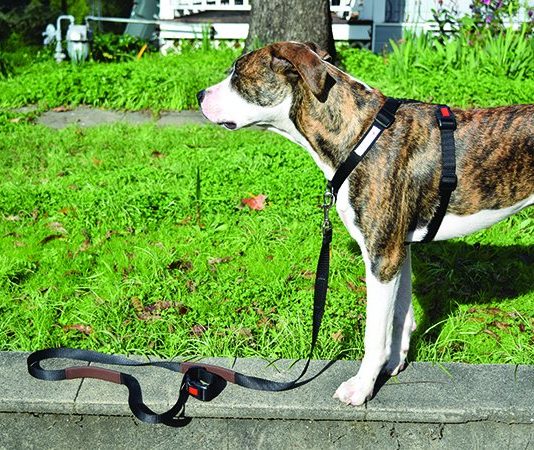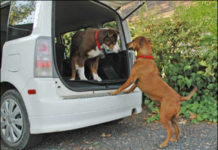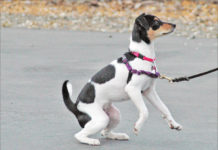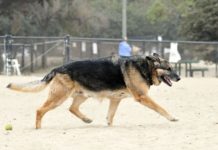What To Do If Your Dog Gets Motion Sickness
meant to help the vestibular apparatus develop properly. This is thought to help prevent vestibular disease and motion sickness later in the puppy's life."
Driving Safely with Your Dog
When I'm driving on the road and see a dog in someone else's car, it makes me smile. I love it when people care enough about their dogs to chauffeur them around town. I love it even more when the dog is in a crate or seat belted in place. My smile quickly vanishes, however, if the dog has her head stuck out the window, is sitting in the driver's lap, darting back and forth across the seats, or worse, riding loose in the back of an open pickup truck. And the ultimate crime leaving a dog in a hot car motivates me to grab my cell phone and call out the animal cops. As much as we love our dogs and want them with us all the time, we have an incontrovertible obligation to transport them safely, for their own welfare as well as ours, and that of other drivers on the roads. All dogs, large and small, should learn to ride politely in their cars. There's a long list of safety hazards concomitant with having an unrestrained obstreperous canine in a moving vehicle.
Planning A Road Trip with Your Dog?
Thinking of taking a road trip with your dog? Road trips can be a lot of fun and are a great way to see...
Finding the Right Rawhide Chew For Your Dog
but they are anything but equal in terms of safety
The Calming Herb Chamomile
With hundreds of trendy herb products lining the shelves of pet shops and health food stores these days, it is easy to forget that many of the most useful herbal remedies for pets are already in the kitchen. Chamomile is just one example. One of the safest and most versatile herbal pet remedies around, chamomile has a broad range of scientifically proven uses.
The No-Pull Harness Debate
Recently, WDJ received a letter from Christine Zink, DVM, PhD, DACVP, DACVSMR, who was concerned about the photo in WDJ (on the cover, no less!) of a jogger whose dog, running alongside, was wearing a front-clip-type harness. A sports medicine guru and canine athlete enthusiast, Dr. Zink (and others) posit that no-pull harnesses are detrimental to a dog's structure and gait and are especially inappropriate for canine athletes.
Is Your Dog Bullying Other Dogs?
You can find them everywhere at dog parks and doggie daycare centers, in dog training classes, in your neighbor's yards ... perhaps even in your own home. They" are canine bullies dogs who overwhelm their potential playmates with overly assertive and inappropriate behaviors
Dog Harness vs Collar: Which is Better?
Dog harnesses vs collars - which is safer? There are many types of collars and harnesses on the market, and some serve specific purposes.
Bee Products Have a Special Meaning for Dogs
Bees may sting, but they create some of the world's most valuable, versatile products. Honey, bee pollen, royal jelly, beeswax, propolis, and even the venom from bee stings are all touted for their human health benefits and many experts say that dogs derive the same advantages.
10 Ways to Make Your Old Dog Comfortable
Sometimes we don't want to admit our dog is aging. We ignore the graying muzzle and scoff at the idea of a senior dog food." After all
Proper Use of Head Halters for Leash Training
Ten years ago, a new dog training tool hit the market. Known generically as the head halter (or head collar), it is a device similar to the halter commonly used on horses. It provides a greatly increased degree of control over the dog who is dedicated to pulling on the collar and leash, without the punishment or pain factors associated with choke chains and prong collars. The head halter has a strap that goes around the dog’s nose, and another that clasps around his neck, just behind the ears. The leash attaches to a ring below the dog’s chin. Just like with halters on horses, bulls and other large animals, it works on the principle that where the nose goes, the body must follow.
The Pros and Cons of Dog Parks
and even dog fights.



















